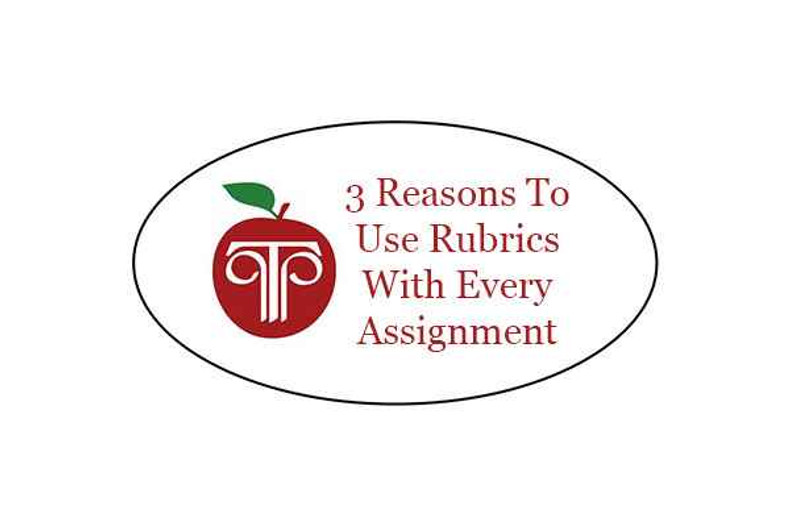"What the heck is a rubric?" I innocently asked. Turns out, it's just a form specifying the criteria for the acceptable completion of an assignment. It takes some time to create a good rubric, but the time spent is well worth it. Here's why:
1) Rubrics Help You Focus Your Assignment
When you have to actually think through the criteria on which an assignment will be graded, it forces you to think about why you are making the assignment and what goals you hope students will achieve by doing the assignment. Creating a rubric clarifies exactly what the assignment IS and exactly what you expect from your students. Rubrics make you a better teacher because they make you account for and justify the assignment(s).
2) Rubrics Eliminate Misunderstandings, Excuses, and Frustration
Did you ever grade an assignment where you could clearly see that the student just didn't understand the assignment? I mean, that it just wasn't what you were asking for. I've heard students say, "I didn't know spelling would count" or "I didn't know it was supposed to be in a letter format" or "I thought citing two sources would be enough."
When you create a rubric for an assignment, there is no doubt whatsoever what needs to be included and on what criteria the assignment will be graded. There's no room for misunderstanding--or excuses. There's no need for a student to feel frustrated or treated unjustly. The facts are there in black-and-white on the page.
3) Rubrics Makes Grading Easier
Let's face it: grading can be subjective or relative. Sometimes when I graded papers as a new teacher, it took my grading a half a dozen essays before I got a feel for how the assignment should be graded. That's just weird, but true. With rubrics, the criteria are already there. You can look at assignments more objectively, checking to see that each item on the rubric has been met.
Some teachers assign points to each item on the rubric, to weight the different components according to importance. For example, if you assign 15 points to using & citing 3 sources, and only 2 sources are used, that's clearly a 5 point deduction. If you're working on sentence structure in class and you assign 10 points for varied sentence structure in a writing assignment, you can easily estimate a value for the sentence structure used in the essay. At the end, you get a numerical total on which to base the grade of the paper.
Numerical grading from the rubric gives you a solid way of more objectively assessing the students' work, AND it gives the students (and their parents) clear reasons for the grades. The student doesn't get a subjective C because "you just don't like him," a complaint commonly heard in schools all over America.
Although it takes time to set up the rubrics, once you have a format down for various types of assignments, it's pretty easy to adjust them for each specific assignment of that type. For example, you might want to have rubric forms for essays, research papers, multimedia projects, journal writing, creative writing, visual projects, vocabulary work, etc. Once you start using them regularly, the tweaks needed will become obvious--and can usually be done quickly. Students will become used to having rubrics for your assignments and will learn to use them to create better work than they would have without them. Rubrics are a great tool!




